Samsung T7 Shield 2TB Performance
For this, we wanted to run through our standard benchmarks.
CrystalDiskMark Benchmark
CrystalDiskMark is used as a basic starting point for benchmarks as it is something commonly run by end-users as a sanity check. We use both 1GB and 8GB test sizes.
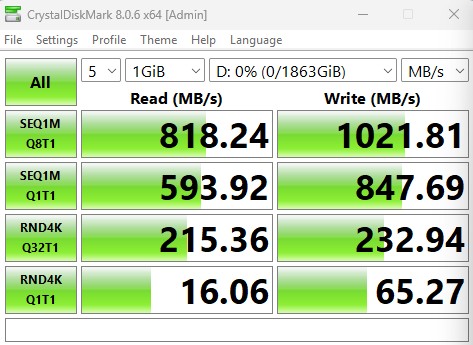
Here is the 8GB test size.
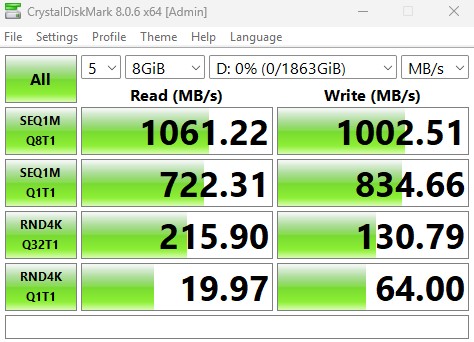
We tend to see the 10Gbps drives top out around 1GB/s of transfer rates which is sufficient for most use cases.
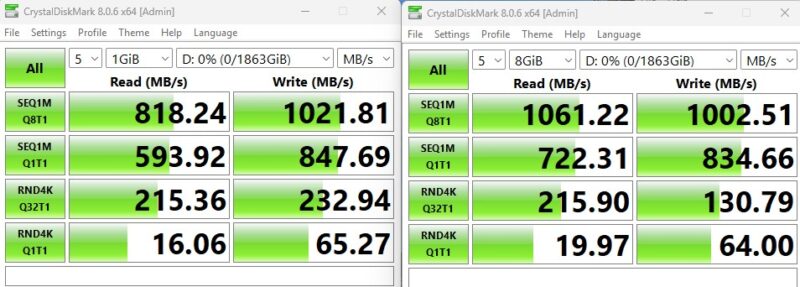
Something worth noting here is that the performance is better with the bigger test size. We see this often with larger SSDs.
ATTO Disk Benchmark
The ATTO Disk Benchmark has been a staple of drive sequential performance testing for years. ATTO was tested at both 256MB and 8GB file sizes.
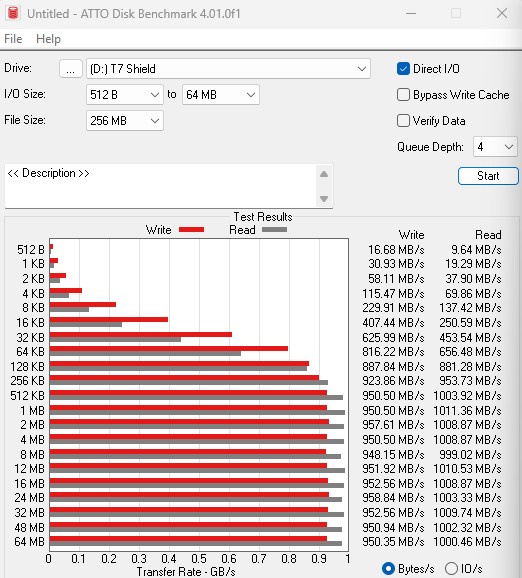
Here are the 8GB results:
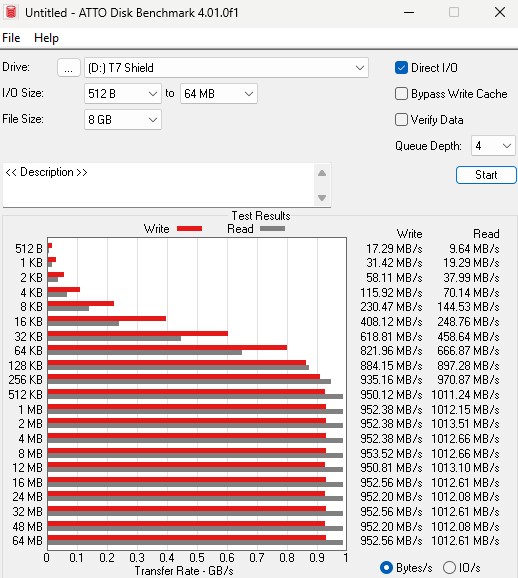
Here is the side-by-side:
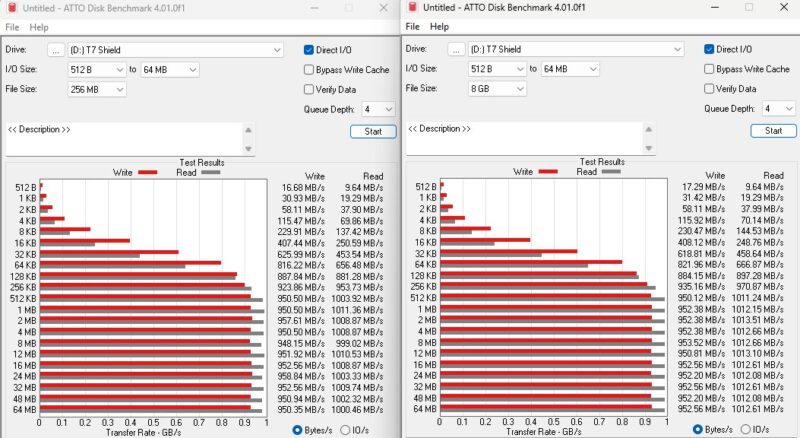
Overall, these are very solid results for sequential transfers. A major focus of this drive is on sequential transfers as it is often used to move data from one system to another.
Anvil’s Storage Utilities
Anvil’s Storage Utilities is a comprehensive benchmark that gives us a very in-depth look at the performance of the drives tested. This benchmark was run with both a 1GB and 8GB test size.
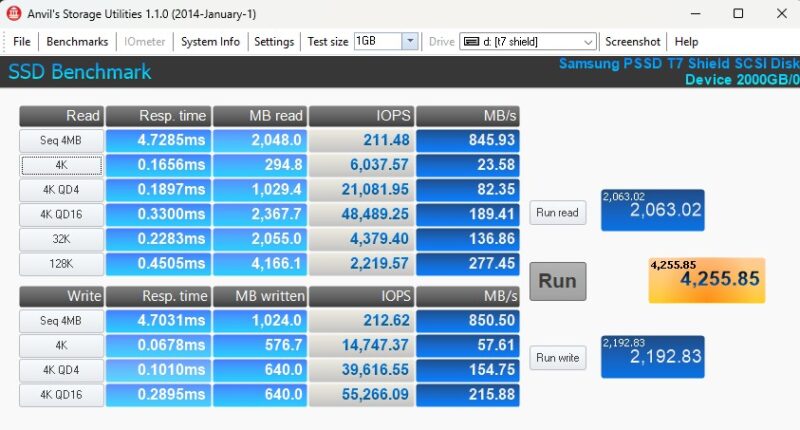
Here is the 8GB result:
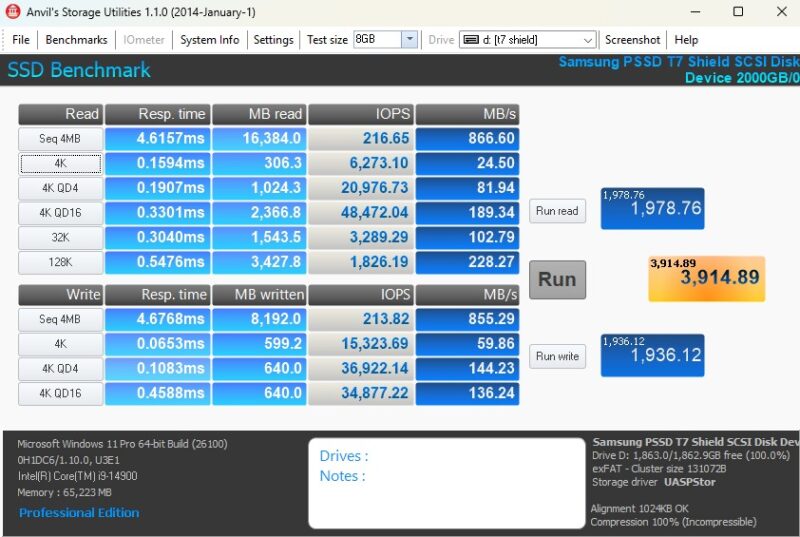
These Anvil results are also solid, but there is a notable difference between these drives and the USB 3 2×2 drives.
AS SSD Benchmark
AS SSD Benchmark is another good benchmark for testing SSDs. We run all three tests for our series. Like other utilities, it was run with both the default 1GB as well as a larger 10GB test set.
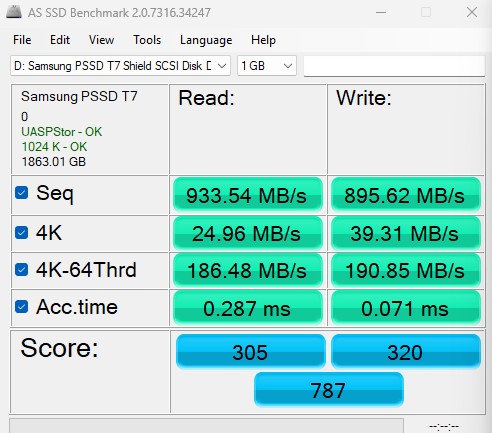
Here is the 10GB result:
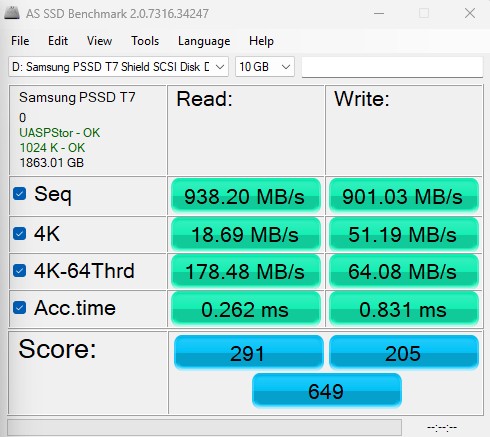
Here is the side-by-side:
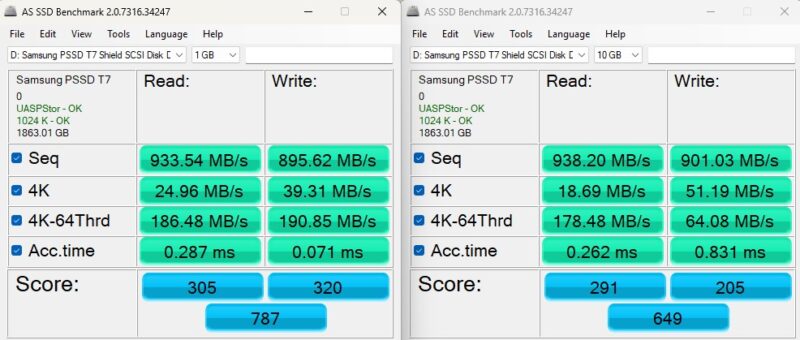
Compared to a SATA SSD, these are quite a bit faster. That really speaks to UASP and how much better external SSDs are than many years ago.
BlackMagic Disk Speed Test
BlackMagic Disk Speed Test is focused on testing storage for use in video workflows.
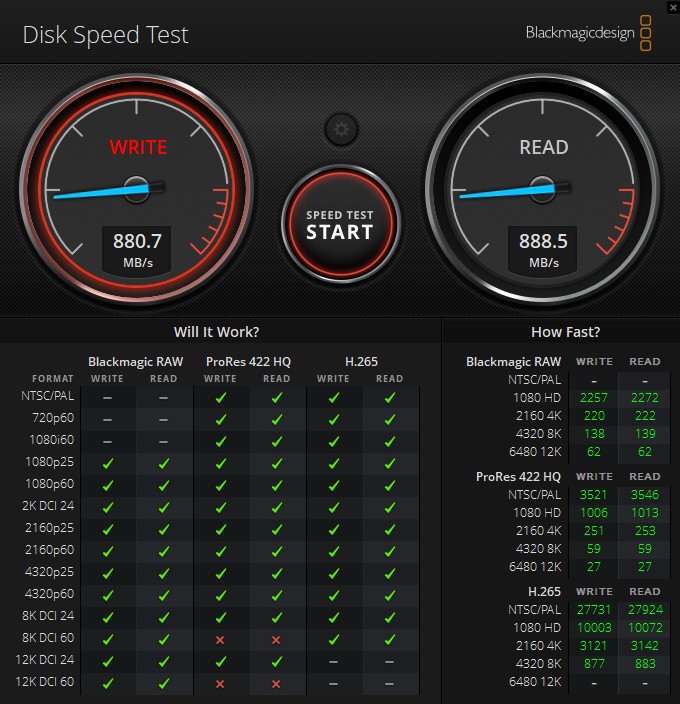
Here we can see the 8K and 12K DCI 60fps ProRes 422 HQ get the red X meaning that this drive is not fast enough for those formats. Still, for the majority of folks doing video work, this drive is going to be more than ample.
Key Lessons Learned
Something we should at least mention is that the drives have performed very well for us. We have not used the drives in the rain and really as “rugged” devices, so perhaps we should save $10 per drive and get the vanilla T7 drives more often than the Shield models.
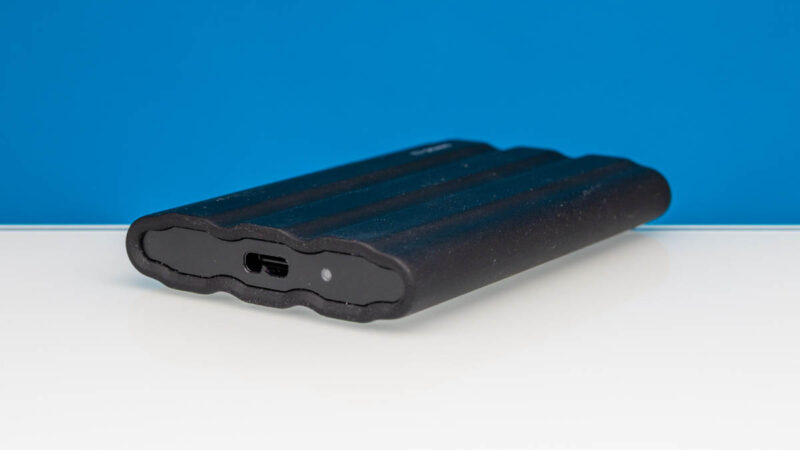
Still, these drives have been extremely reliable for us. Perhaps it is because of getting the Shield versions, but these are constantly in backpacks, Pelican cases, and sometimes dropped on concrete floors off of desks and tables. The $10 premium with the 2TB T7 Shield drives selling for around $149 instead of $139 for the standard T7 at the time of this review we often feel is worthwhile for the rubber.
Final Words
We often use these drives for their portability, but they have been used for editing and we have yet to have a data corruption issue with them. We are not testing the longer-term retention of the drives in this series.
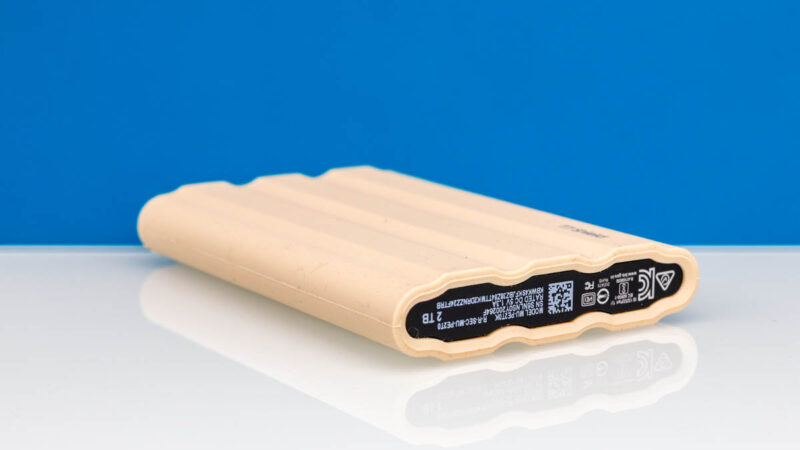
We are going to call these a decently performing drive that has worked well for us thus far, but the question is whether we should be switching to another drive.
Where to Buy
You can find our Amazon Affiliate link here.


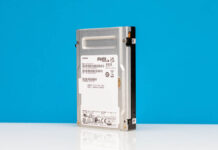
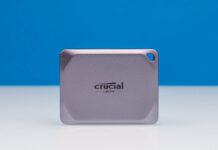
oooh!
This colour pairs-well with the Mossy Oak Bottomland ATN X-Sight 4K Pro 5-20x (on a Coyote Tan SIG MCX-Spear).